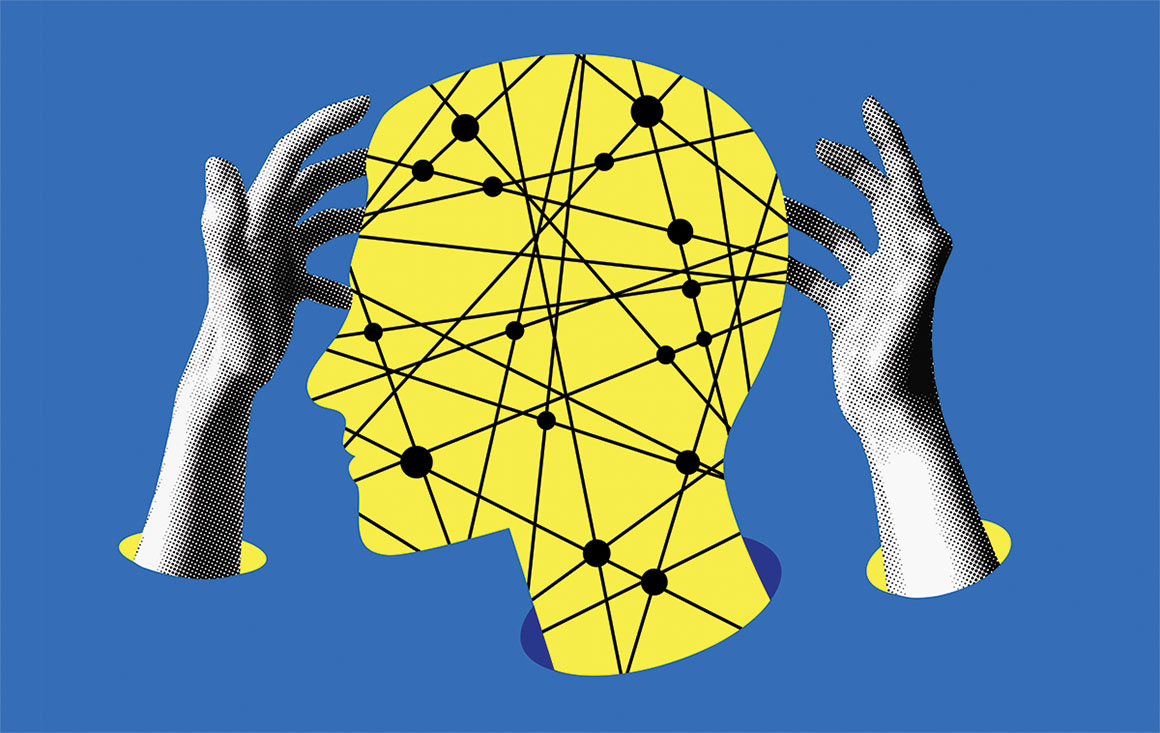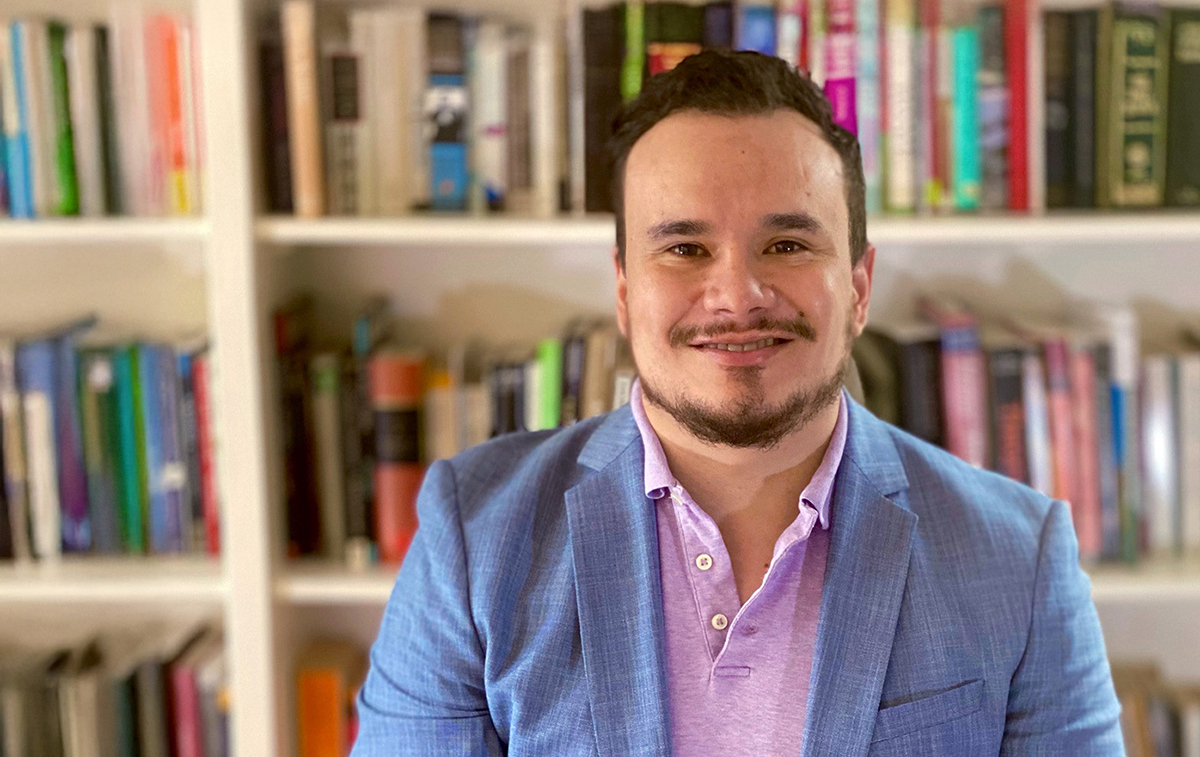The Pursuit of the Impossible
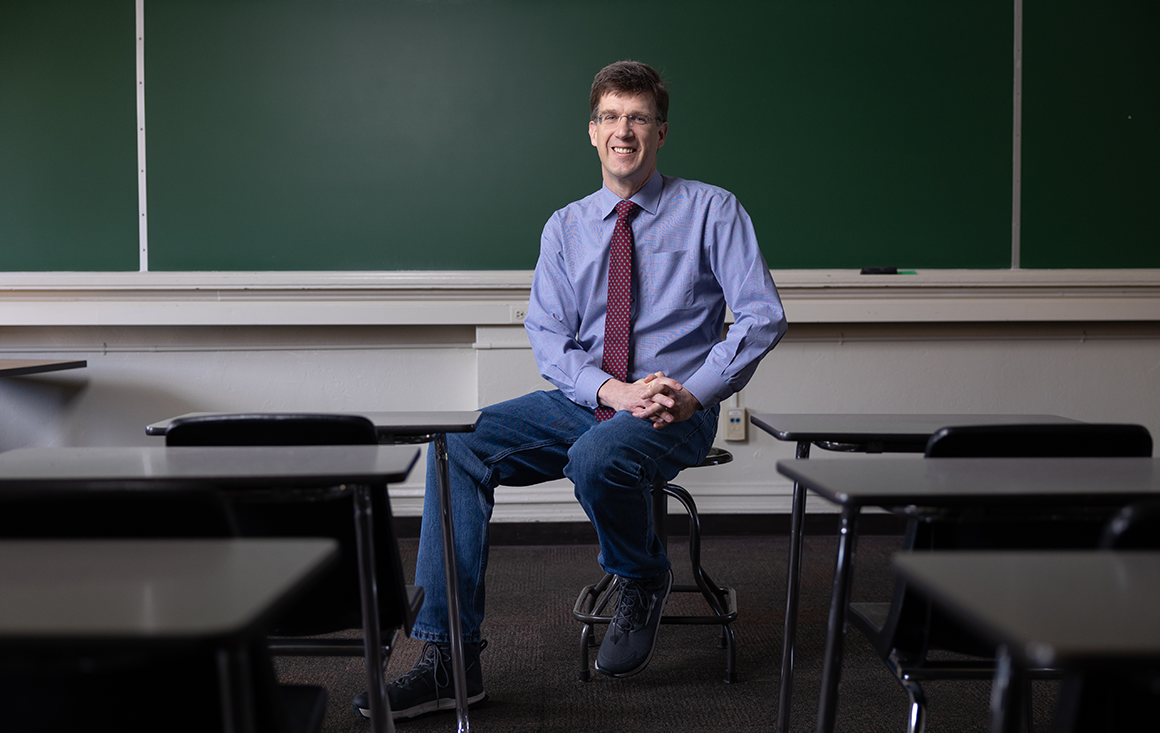
When Stephen DeBacker ’90 was a high school freshman, his math teacher, Mr. Gnad, stood in front of the class and said: “The only way anyone is ever going to get extra credit from me is if they figure out how to trisect an angle with a straightedge and compass.”
Challenge accepted.
“I have no idea how many trees were destroyed in my quest to get extra credit in the class, but I never got it,” he recalls—and there was a good reason: there isn’t a way to trisect an angle, at least, not by using those methods of ancient Greek geometry.
While he’s still not sure whether or not Mr. Gnad set the futile task to stump students looking for an easy way to score points, DeBacker credits this trick question for giving him a life-long appreciation for difficult mathematical problems.
In the decades since then, his pursuit of the impossible has brought him to the highest-level math at esteemed institutions like the University of Chicago, Harvard University, and the University of Michigan, where he now works as an Arthur F. Thurnau Professor of Mathematics.
But, despite his impressive decades of work in the dizzyingly abstract world of representative theory, these days, the problem he’s most interested in solving is the growing need for skilled math teachers.
“Looking nationally at what’s happening in the teaching profession, our children and grandchildren are being short-changed because no one's going into teaching, and the people who do are only lasting four or five years before they leave,” he explains. “For math, we’re also seeing people not trained to teach the subject forced into these roles—I think it’s a real problem if a math teacher doesn’t know math.”
While the number of students pursuing math degrees in the United States is at an all-time high, these students are pursuing careers in finance, computer science, and other fields rather than teaching. For example, he explains, in the early 2000s the University of Michigan might have had around 80 math graduates in a year, with more than 20 entering the teaching profession—but last year, of the 250 students who earned a bachelor’s degree in math, only one went into secondary teaching.
“Teaching is an art,” DeBacker says, “and we have to try hard to create a pipeline of qualified people who can teach.”
He works on creating this pipeline through a range of outreach projects at the University of Michigan, and this year, he has returned to his alma mater as SCU’s most recent Halmos Visiting Professor in mathematics. He is the first alumnus to hold this prestigious title, having also been mentored by the position’s namesake—a “full-circle” moment for DeBacker’s teaching career.
The role will not only allow DeBacker to teach where he once studied, but also to inspire others to consider the value of having—and maybe even becoming—a good teacher.
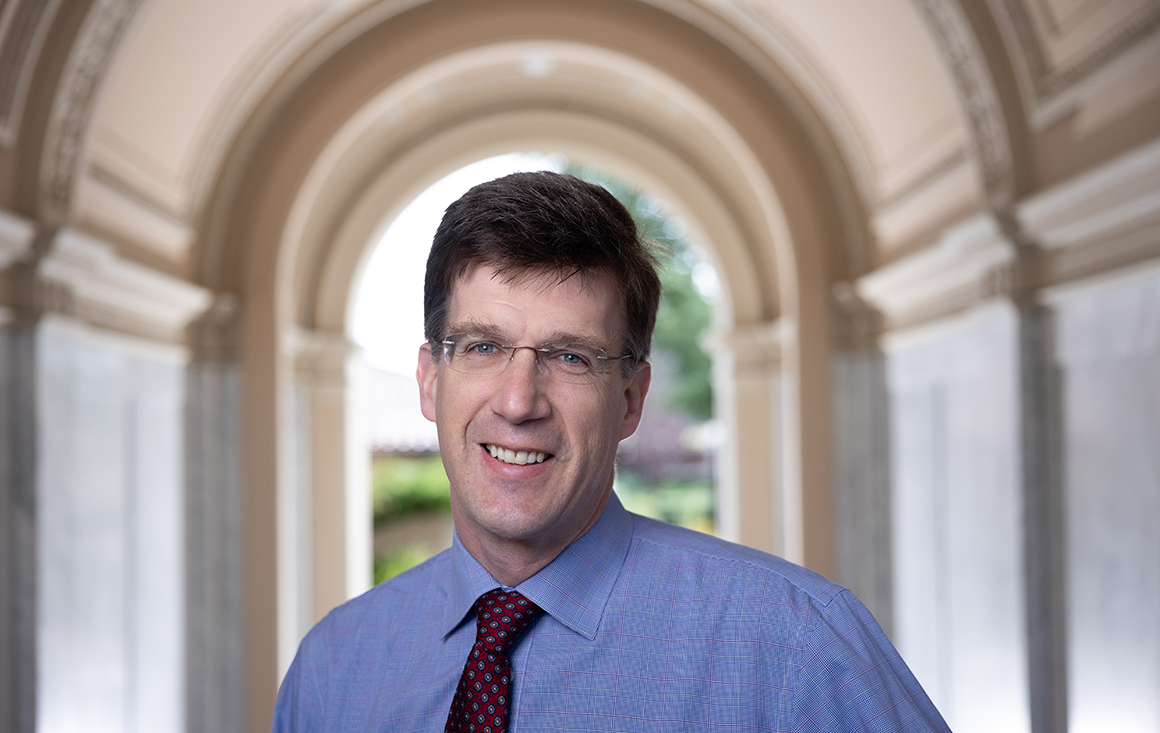
The beautiful struggle
When DeBacker was looking at colleges, Santa Clara University first appealed to the Kansas native for its proximity to the ocean, and secondly, for its academic rigor. His first math class at SCU, taught by Professor Gerald L. Alexanderson, did not disappoint on that front.
“On our first test, the highest score was 36 out of 100. I got a 32,” he quips. “So, we weren’t acing these problems, but it was fun to work at it.”
This appreciation came easy, he adds, because of Alexanderson’s endless enthusiasm as a teacher. To this day, he still remembers Alexanderson’s lightning-fast writing and straight talk in the classroom.
Another of his favorite SCU teachers? Professor Paul Halmos.
Halmos was a legend in the field of mathematics. Not only did he make important advances across a range of subjects, like statistics and logic, but he was also nationally recognized for his abilities as an educator. He was particularly known for his pioneering approach to Inquiry-Based Learning (IBL), a method designed to encourage direct student engagement through open-ended questions and peer collaboration. Instead of teaching students to mindlessly crunch numbers like calculators, IBL teaches math as if it’s an art.
Of course, DeBacker knew nothing of Halmos’ fame or even what IBL was, but he experienced it in action.
In a typical class, DeBacker and his classmates barely knew the topic they’d be learning about. Halmos would begin class by asking questions and eventually writing definitions on the board so they’d have somewhere to start from. He’d also delay calling on the more accomplished students so that the students who were struggling would be able to equally participate and not get left behind. It’s a method that DeBacker eventually adapted for his own classes.
“People talk all the time about how liberal arts degrees train you to think, and in my opinion, math is the most liberal arts degree there is. Between the critical thinking and writing skills you learn when doing higher-level proofs, it’s excellent training for world domination,” DeBacker jokes.
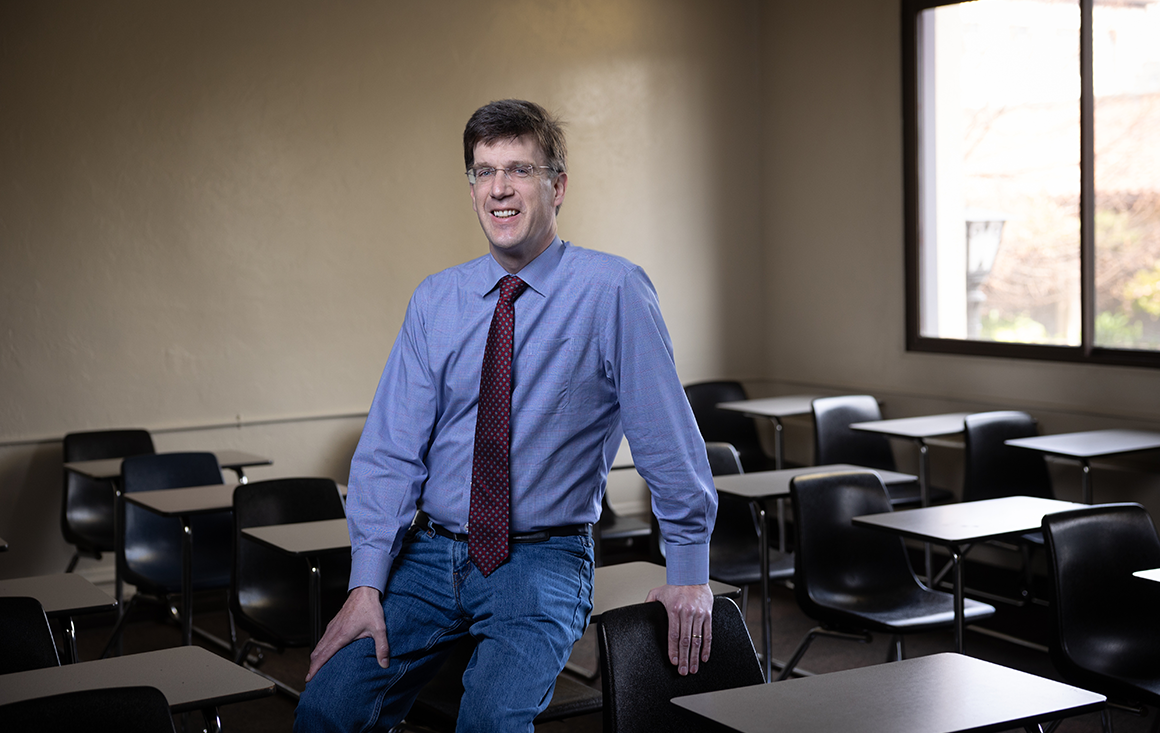
Paying it forward
On top of its academic rigor, DeBacker was drawn to Santa Clara University because of its Jesuit Catholic values, particularly its emphasis on community service.
While at SCU, he was an active member of SCAAP alongside his now-wife, Lillian (Wong) DeBacker ’90. While the college sweethearts both studied numbers—mathematics and accounting, respectively—they preferred bonding over their shared desire to help others, helping prepare food for the unhoused every Saturday at 5 a.m. at a local Jesuit soup kitchen.
However, DeBacker’s passion for community service took on a new shape when he was working on his Ph.D. at the University of Chicago. There, he was mentored by Professor Paul J. Sally Jr., another titan in the field of mathematics who led several high-profile math education programs, like the Young Scholars Program (YSP) which offered advanced math courses to gifted Chicago students, especially girls and students of color who are often underrepresented in higher mathematics.
While working with Sally, DeBacker remembers escorting him to a math conference in Iowa. They were riding an elevator in the conference hotel when the doors opened on a group of conference attendees who had gathered to surprise Sally. In a conference of mostly white mathematicians, this group of Black graduate students had all participated in Sally’s Young Scholar Program years ago and wanted to thank him for helping them get their start in mathematics.
“It was fantastic to see that it was possible to have a real impact, not just on diversity in our field, but on all these lives,” says DeBacker.
Inspired by Sally’s example, DeBacker now holds a leadership role in all of the University of Michigan’s math outreach programs, including a math teacher circle and several programs for middle and high school students.
One of the programs DeBacker is proudest of is the Math Corps program he co-runs in Ypsilanti, a lower-income town outside of Ann Arbor, MI. This five-week summer program teaches math to middle schoolers by paring everything down to a few basic principles that can be universally applied—“I think of it as ‘new math’ implemented in a reasonable way,” he says.
The Ypsilanti program was based on a similar one in Detroit that has been running for over 30 years. Since that program’s start, participating Detroit schools have seen 90% of their students graduate high school, and 90-95% continue on to college or the military. In contrast, the city’s average high school graduation rate is only 77%, and its average college enrollment rate is only 47%.
DeBacker has his fingers crossed for similar results in Ypsilanti, but he also knows that to change the way math is taught, you also have to impart the skills that make a teacher great at teaching.
By encouraging his math students—both at the University of Michigan and Santa Clara University—to work as undergraduate teaching assistants, tutors, or summer program instructors, he hopes that more students will sharpen their teaching abilities. Perhaps, he says, these experiences might convince some of them to stay on the journey from student to teacher, like he did.
To him, it’s a way to pay forward the many gifts and lessons he received from the instructors who made such a huge difference in his life: Mr. Gnad, Professor Alexanderson, Professor Halmos, and Professor Sally.
The study of mathematics and computer science give two complementary ways to engage with our modern world.
